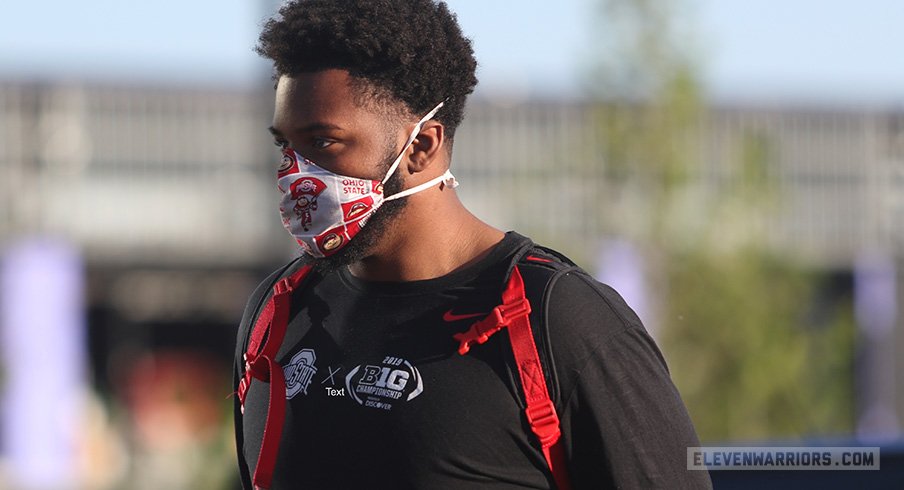The past few weeks of news with the intersection of sports and infectious disease have been defined by a general shift from hopeful optimism to disheartening realism that college football will not be the same this year if it is played at all.
The Ivy League and the Patriot League have officially called off fall sports. The Big Ten and Pac-12 have moved to conference-only schedules. Power Five schools are suspending workouts due to coronavirus clusters. According to a recent report, gloom is in the air with a Power Five athletic director saying, “Right now, I don’t see a path in the current environment to how we play.”
Several challenges face universities when it comes to making decisions regarding the 2020 college football season. The behavior of the novel coronavirus is unpredictable. Epidemiologic models are based on the past behavior of similar viruses, but scientists and physicians are learning about COVID-19 in real-time.
Each state and each county housing these universities have different orders which are ever-changing based on patterns of regional spread, making a uniform policy for all universities impossible to implement. In other words, the NCAA cannot make a blanket policy for all college football programs to dictate whether or not to suspend workouts, travel restrictions, scheduling, and so forth. The variability and liability are too great. The newest NCAA guideline update does include recommendations for once-weekly testing frequency and a 14-day quarantine for close contacts of positive cases, but the lack of leadership at the top of college football is a bug right now, not a feature.
While much of the discussion regarding the pandemic’s effect on athletics has centered around policy logistics, financial cost, and the very justified mourning of the loss of normalcy for a sport so significant to American culture, a relatively underrepresented consideration has been the individual student-athletes.
While risk mitigation and the health and safety of student-athletes, coaches, officials, staff, and fans is at the core of this ongoing decision making, it is important to consider the current psychological impact of the day-to-day ambiguity plaguing athletes.
Athletes need to muster up the motivation to train each day for a season that is not guaranteed, and they are trying to program training progression towards a shifting timeline and game schedule, all while staying as isolated as possible from their support system.
Further, senior athletes or athletes slated to return from an injury this season after months of recovery and physical therapy are facing the discouraging possibility of a limited or nonexistent season. Back-ups who are finally anticipating a season as a starter are watching coronavirus case counts rise knowing the potential impact these trends will have on policymaking.
Preparing for various contingency plans without any sort of distinct guaranteed direction can have a constant, low-grade, droning toll on mental health, manifesting as chronic stress. Having no external control over the trajectory of the coming months, but being expected to maintain internal control and focus on performance for a nebulous season is a taxing paradox.
Having no external control over the trajectory of the coming months, but being expected to maintain internal control and focus on performance for a nebulous season is a taxing paradox.
Stress impacts recovery, and recovery impacts performance -- a snowballing challenge for student-athletes navigating an agenda set by a global pandemic. Psychological stress also negatively affects immunity, the latter being a variable that needs to be optimized right now.
Moreover, while a regularly-scheduled testing protocol will protect student-athletes by early identification of positive cases, it can also become the culprit of regularly-scheduled anxiety. With the current quarantine recommendations for all positive cases and close contacts of positive cases, one athlete with COVID-19 could shut down his entire position unit for 14 days if he has had direct contact with these teammates during drills. Imagine an athlete sprains his ankle at practice, and now anyone he contacted that day needs to sit out for two weeks while he recovers. Of course, an infectious disease is, by nature, infectious; it needs to be addressed with this protocol. However, the athletes who feel completely healthy and now need to quarantine and miss two games will feel like the unaffected athletes in the ankle sprain scenario. The inevitable self-reproach will be difficult for the athlete who tested positive, despite it being no intentional fault of his own.
Each team, university, and conference is tirelessly working to make the best-guided decisions that balance risk with reward. No decision will come without liability. While it seems like much of how things operate during this time is just “winging it,” each decision is calculated and strategized with benevolent intentions from the level of the student-athlete, to the institutional level, to the national level. Optimism remains within programs for some semblance of a 2020 CFB season. The best-case scenario would be for national case numbers, hospitalization numbers, and ICU capacities to fizzle to a slow, steady ember as quickly as the recent regional spikes have climbed.
To support student-athletes and optimize the likelihood for a season, the consistent evidence-based measures are to continue to follow CDC guidance, wear a mask, regularly wash hands, socially distance whenever possible, stay home when sick, avoid large gatherings and prioritize science over politics for a science problem. The Ohio State University has a COVID-19 Transition Task Force in place to ensure a safe campus environment for students, faculty, staff, and visitors.
Dr. Aloiya Earl is a sports medicine physician in Dayton. After a writing hiatus while completing her residency at Ohio State and fellowship at the University of Alabama, she has rejoined Eleven Warriors as a medical columnist. She’ll be writing informational articles about injuries, recovery, the implications of COVID-19 on college athletics, and various other sports medicine & sports science topics.


